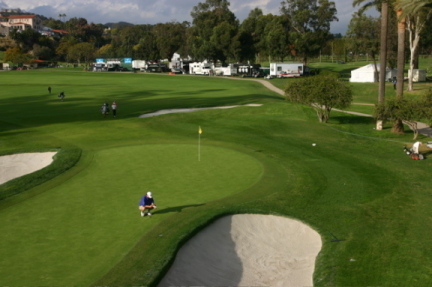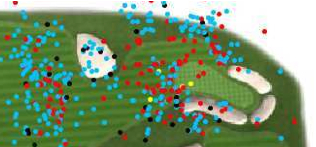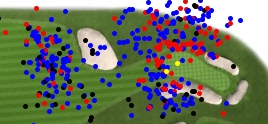The Power Of Short Grass
/For my recent Golf World story on short par-4s, the PGA Tour's communications department provided me all sorts of fascinating stats and "scatter charts" produced from its ShotLink system. There were so many interesting little details that popped up, but one of my favorite was this clear demonstration of how a change at Riviera's 10th impacted play in 2007.
From about 1993 to 2006, a short grass chipping area had been cut on the front left of the green and was one of the reasons the hole vaulted to its place as the world's best short par-4. As I noted in the Golf World sidebar on No. 10, this was the work of Jim McPhilomy, Peter Oosterhuis and consulting architects Ben Crenshaw and Bill Coore.
In 2007, apparently having not gotten the memo that the 10th hole was cited as one of the best holes in the universe, architect Tom Marzolf jacked around with the bunkers, adding several tacky capes and bays while expanding the lay up aiming bunker. But worst of all, he eliminated the short grass area next to the green that had added so much intrigue (see above photo).
I believe it's one reason why there was a 20% increase in players driving the green in 2007. Having longer grass near the green meant balls would stay closer to the putting surface and provide a simpler recovery shot.
So check out the 2006 "scatter chart" with the short grass area (blue means pars made from that tee shot location, red means birdie, blue means par, black means bogey and yellow means eagle).

And now look at the 2007 chart, with the cluster of birdies congregating in the front left area that used to be tightly mown. A fine example how short grass makes a hole more difficult...in a good way:












